‘Muthai Tharu’ is an iconic song from ‘Thiruppugazh’ composed by Arunagirinaadhar who lived during the 15th century in Thiruvannamalai, a temple town in Tamil Nadu. ‘Thiruppugazh’ is a significant work of medieval Tamil literature. It is celebrated for the perfect amalgamation of literature and devotion. Arunagirinaathar excelled in composing complex lyrics coupled with intricate rhythmic patterns. His other precious creations in praise of Lord Muruga are ‘Kandhar Alankaaram,’ ‘Kandhar Anubhuthi,’ ‘Vel Viruttham,’ ‘Mayil Virutham,’ and ‘Seval Virutham.’
The life of Arunagirinathar is paradoxical. His early years are in stark contrast to his later years. Since his father died soon after his birth, he was nurtured by his pious mother and sister. It is said that he was attracted to several vices and was always in pursuit of sensual pleasures. Due to his life of careless lifestyle, he suffered from leprosy and was avoided by people. Soon all the hard-earned money given by his sister dwindled. He had no more of it for indulging in any worldly pleasures. This made him so miserable that he wanted to end his life. His sister was the epitome of self-sacrifice and offered to sell herself to provide him with money.
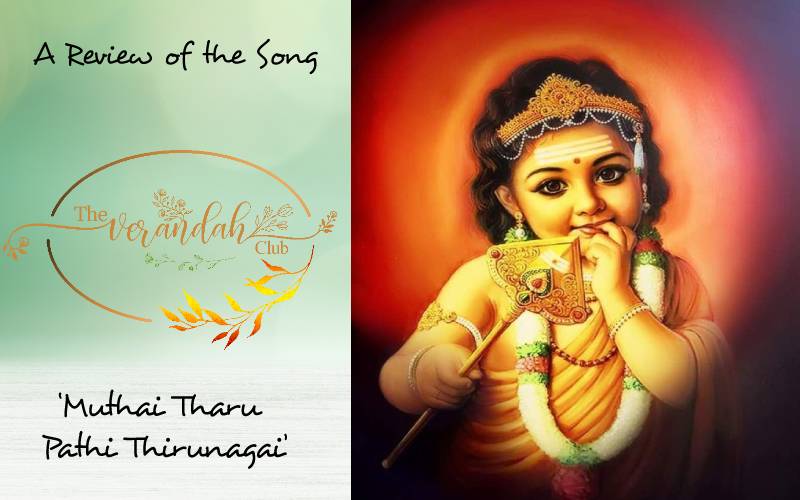
Arunagiri was shell shocked after listening to her words and he realized that he had caused so much pain and distress for everyone due to his selfish indulgences. From thenceforth, his life took a U-turn. He rushed to the Thiruvannamalai Arunachaleshwarar Temple, banged his head against the pillar, and pleaded for forgiveness. He wanted to give up his life by jumping off the temple Gopuram (temple tower). It is believed that Lord Muruga cradled him in His arms and prevented him from falling. The Lord said that he was born not to fall, but to make others rise. He also cured him of his leprosy. By the divine grace of Lord Karthikeya, Arunagiri completely turned into a new leaf. The Lord declared that he was created for a greater purpose to compose devotional songs in praise of Him. Arunagirinathar was overwhelmed and surrendered to the Lord after having the glorious darshan of Lord Singaaravelan majestically seated on His Mayil Vahanam (Vehicle of Peacock) holding His Vel (lance-like weapon).
Using His Vel, Lord Saravana wrote the Shadaksharam, The Aarezhutthu Mandhiram (six letters) in his tongue. Lord Muthu Kumaran helped Arunagirinathar by composing the first poem, ‘Muthai Tharu.’ And from that day onwards, the poet inundated the devotees with a freshet of poetry in praise of Lord Arumugha. On listening to his honey-sweet poems, one could surely feel the rich Bhakti Bhava present in them.
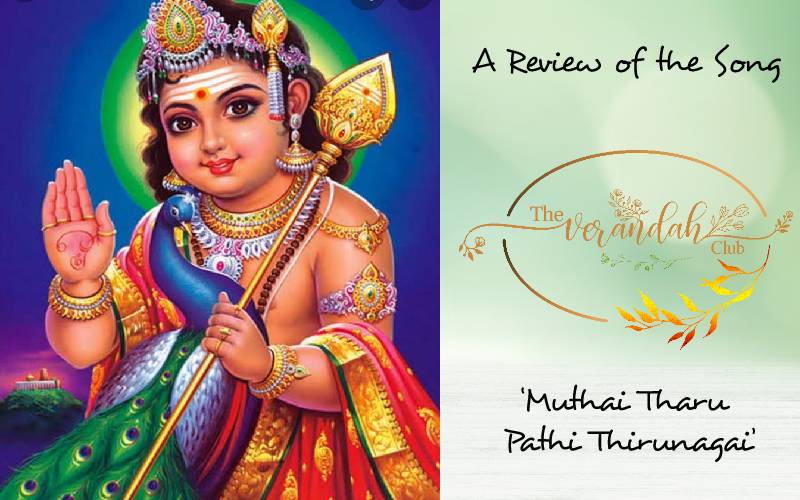
The lyric of ‘Muthai Tharu’ is interwoven into an intricate mosaic of variegated tongue twisters interspersed with syllables which proves to be challenging to even accomplished singers. The song comprises of eight stanzas.
In the opening verse, Arunagirinathar describes Lord Deivayanikaanthan as the Lord of Deivayanai, and the one who has a divine smile, flashing His pearly white teeth. He is Lord Velavan, who is holding the Shakti Vel and the one who gives Mukti (liberation) to His devotees.
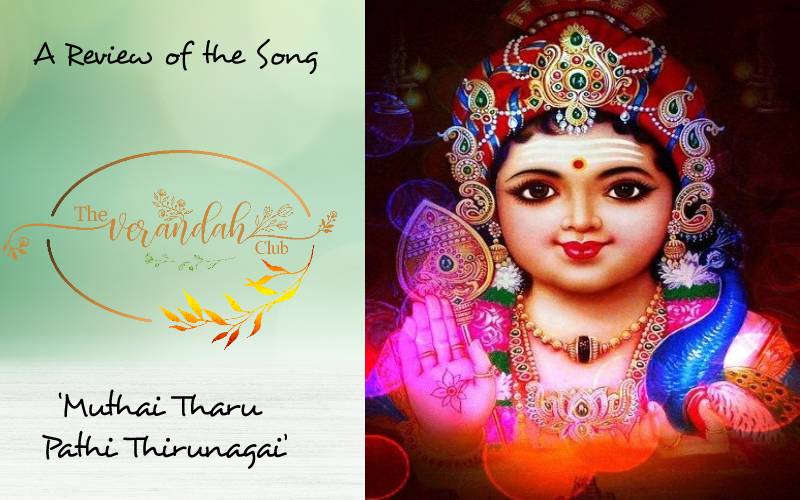
Lord Swaminatha has preached the fundamental truth of the Omkaara mantra to Lord Shiva, the one with three eyes (the Sun, the Moon, and the Fire), while Brahma and Vishnu witnessed it wonderstruck, and the thirty-three crores of Devas worshipped His lotus feet.
Although Arunagirinathar was a staunch Muruga devotee, he always included anecdotes of Lord Vishnu, Krishna and Rama from the great epics, ‘Bhagavatham,’ ‘Ramayana,’ and ‘Mahabharata.’ He had also given prominence to the special bonding between Lord Vishnu and his nephew, Lord Skandha. (Parvathi is the sister of Vishnu).
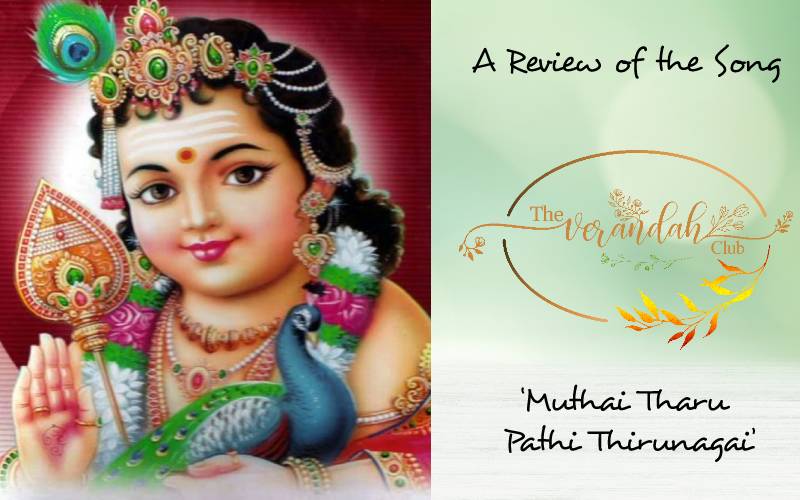
In this stanza, he elucidated the valor of Rama who shattered the ten heads of Ravana with his volley of arrows. He also narrated about the Kurma Avatara (‘Kurma’ - Tortoise, the second avatara of Lord Vishnu) who supported the Mandhara Mountain when the Devas and Asuras churned the milk-ocean. He recounted the manner in which Lord Krishna transformed the broad day light into darkness by blocking the Sun with His Chakra (Discus). Arjuna had vowed to kill Jayadradha before sundown. In order to support Arjuna's vision, Krishna created the night effect. Believing which Jayadradha came out of his hiding and was eventually killed by Arjuna.
He narrates that Lord Maal Marugan is the favorite of Lord Krishna, who took up the role of Arjuna’s charioteer during the Kurukshetra war in the Mahabharata. He is cherished by Lord Vishnu, the one who possesses the complexion of emerald green and the hue of the sky. The poet implores Lord Subramanya to be merciful and to protect him soon.
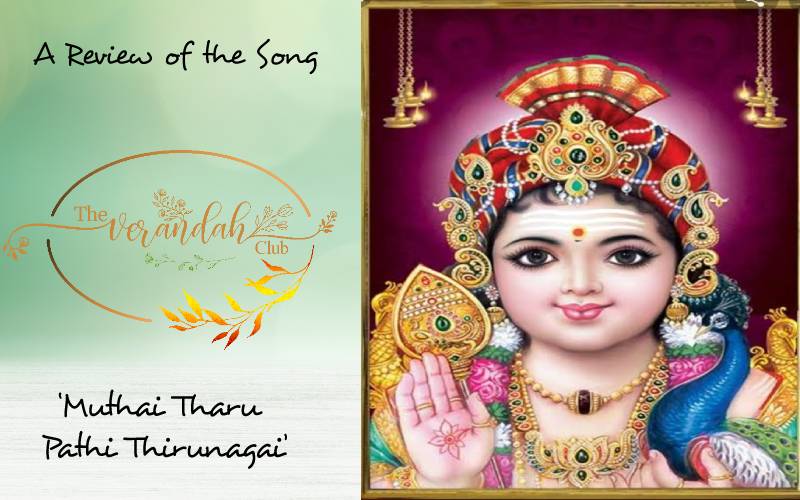
The second half of the song shifts from the mood of sentiment to that of bravery and valor. It vividly recounts the war that ensued between Lord Muruga and Soorapadman. The anklets of Bhairavi (kali), tinkled in rhythm with the meter, Thithithaya, as she danced frenziedly, moving in all eight directions. Even the devils in the battlefield danced with the eagles.
The eight Bhairavas protecting the eight directions choreographed this daring dance set in the beats, “Thokku Thogu Thokku Thogu Thogu.”
This stanza picturized the petrifying scenes in the battlefield. Innumerous war drums were beaten. The old vultures in the battlefield screeched, “Kukku Kuku Kukku Kuku Kuku.” They shrieked, stabbed, buried, attacked, and captured, as they kept revolving above the corpses in a circular motion.
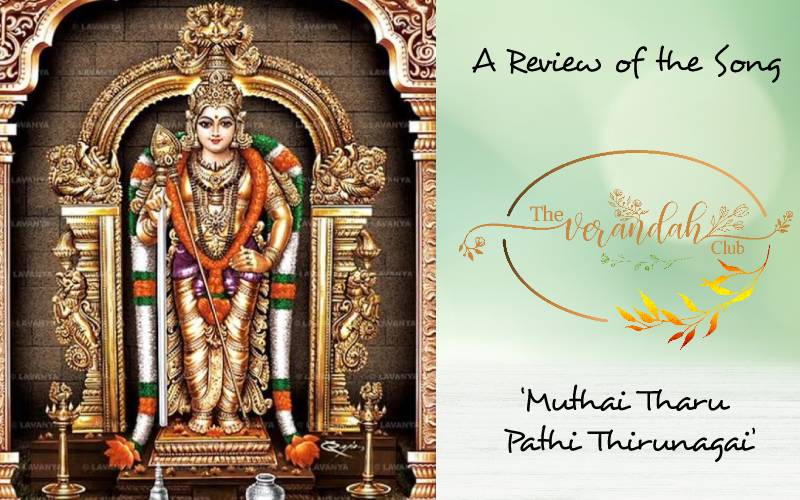
In the concluding stanza, the lyricist depicted the manner in which the hostile demons were massacred en masse. The mountain, Krounchamalai, which acted as the fortress for Soorapadman and his brothers, was shattered into pieces when the supreme Lord Sendhilnadhan fought for the righteous Devas. This lyric is so powerfully penned that the listener is able to bring forth the images of the fiery battle that ensued between Lord Vetrivelan and Soorapadman.
The song is set to tune in the Raga Shanmugapriya. Just as the name suggests, this raga is very dear to Lord Shanmugha. Many songs in praise of Lord Muruga are composed in this Raga. Shanmugapriya is the Raga that has the special ability to evoke Bhakti Rasa. The popular movie songs based on this Raga are ‘Pazham Nee Appa’ from ‘Kandhan Karunai,’ ‘Maraidhirundhey Paarkkum’ from ‘Thillana Mohanambal,’ and ‘Takita Tadhimi’ from ‘Salangai oli.’
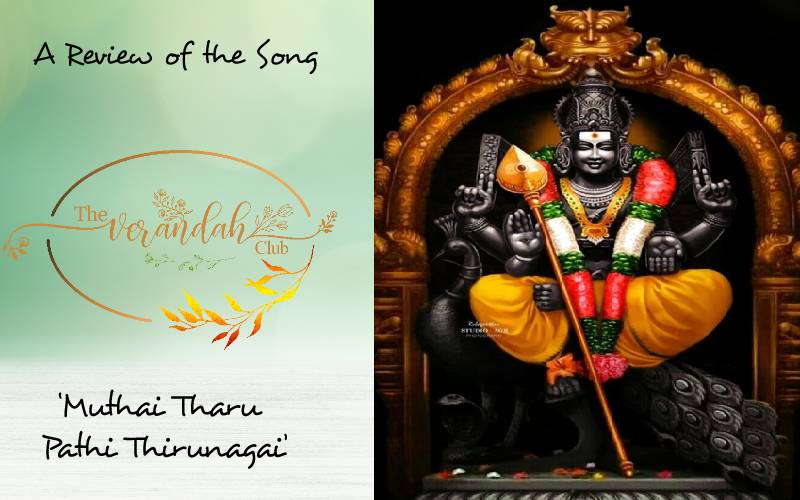
Based on the life of this poet, a Tamil movie, ‘Arunagirinathar’ was picturized and was released on August 7th, 1964. The illustrious playback singer, T. M. Soundararajan played the title role. He also rendered the song ‘Muthai Tharu’ in his unique style.
When the Rasika-s listen to this song, they will be able to visualize the divine form of the Lord, His splendour, glory and feel blissful.
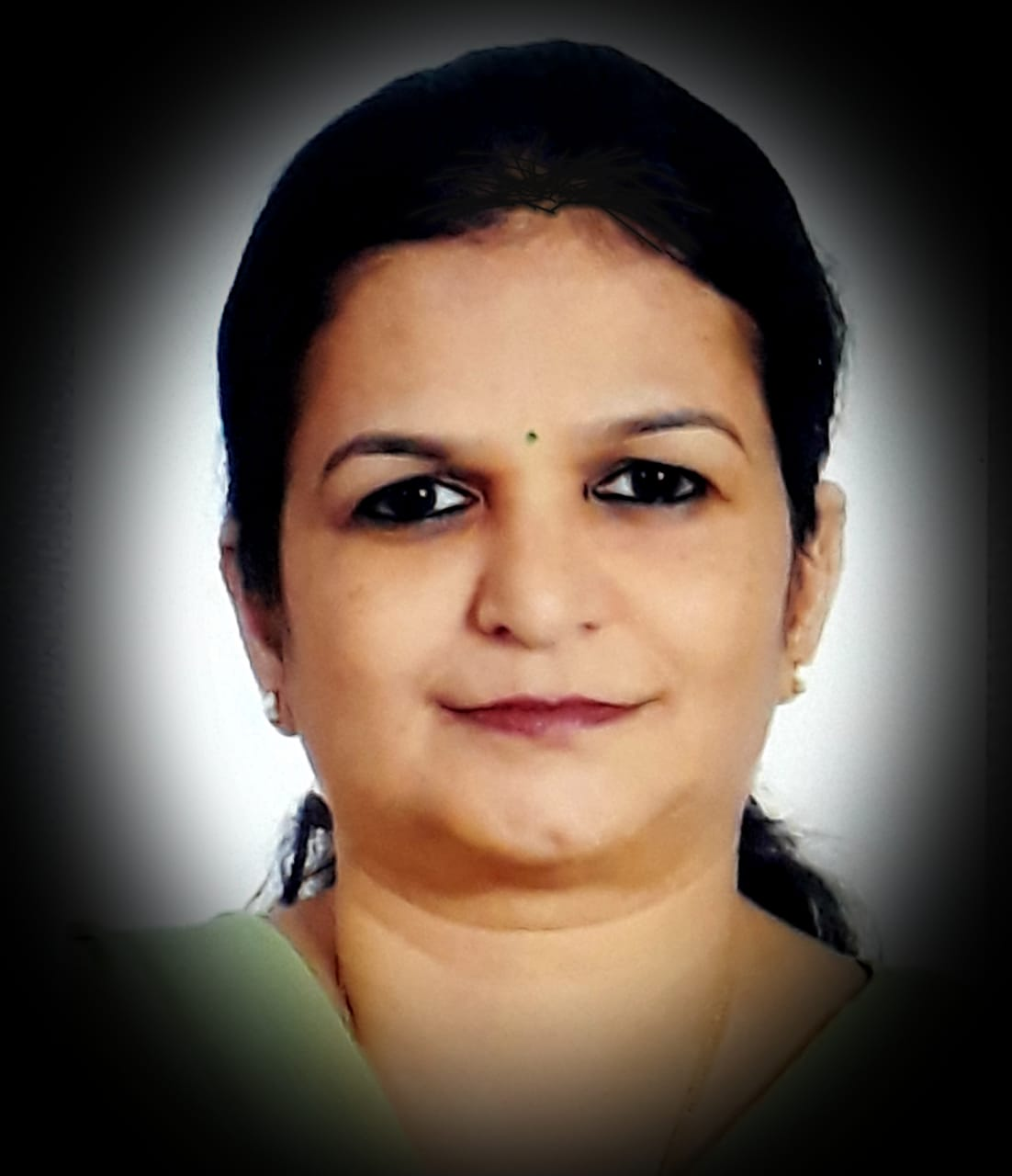
Yamuna is a resident of Coimbatore and is pursuing Hindustani vocal music under the tutelage of Shri Kedar Karatji. She also teaches bhajans and conducts English Grammar classes for school children. Her other passions are writing travelogues, playing keyboard, gardening, going on pilgrimages and exploring & enriching her knowledge through travel.
NEXT ARTICLE